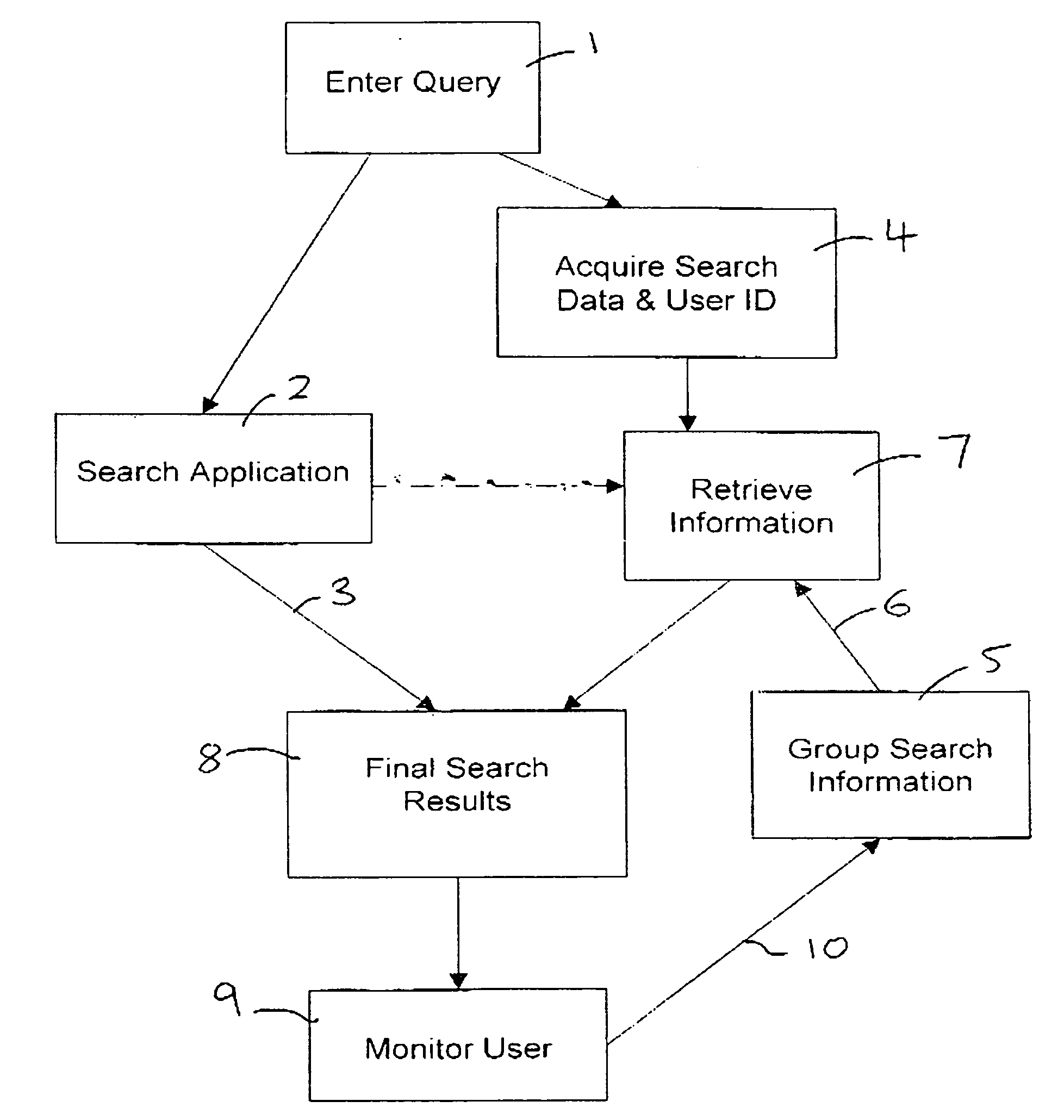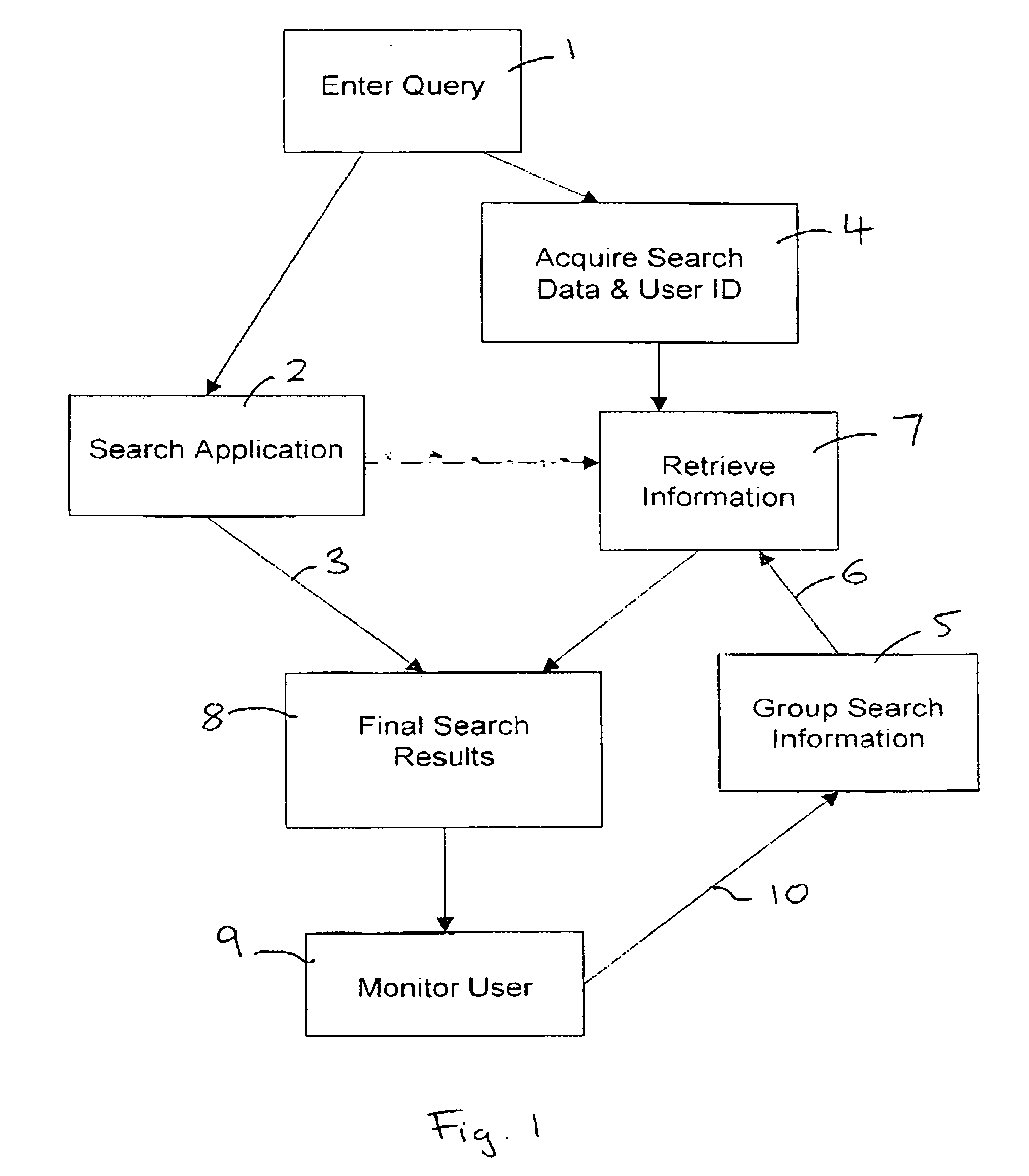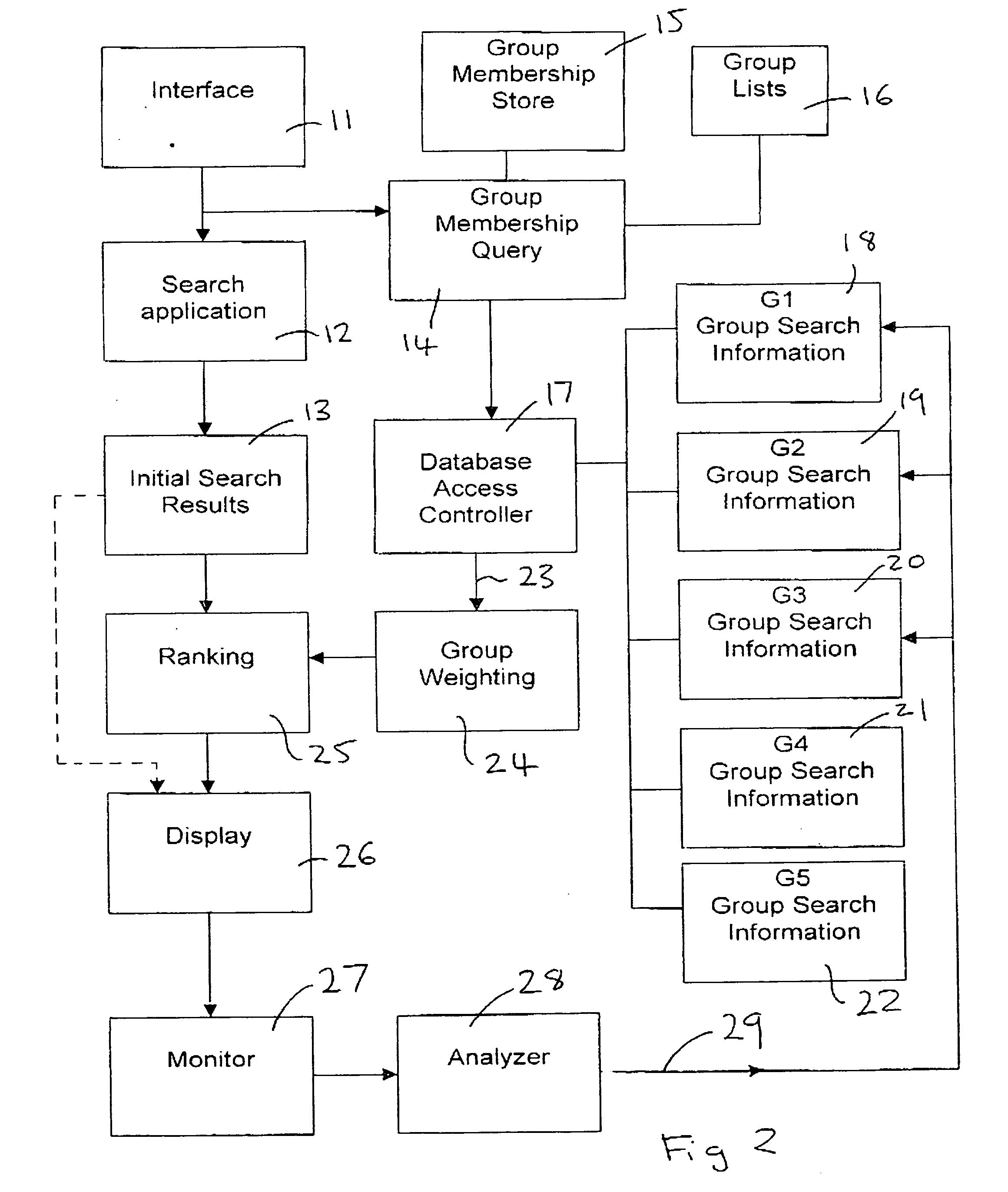Method and apparatus for providing search results from content on a computer network
a technology of computer network and search results, applied in the field of providing search results from content on a computer network, can solve the problems of difficult navigation of large intranets or extranets, difficult for users to find the most relevant ones to their needs, etc., and achieve the effect of less direct connection to the user
- Summary
- Abstract
- Description
- Claims
- Application Information
AI Technical Summary
Benefits of technology
Problems solved by technology
Method used
Image
Examples
Embodiment Construction
[0019]With reference to the method illustrated in FIG. 1, a user enters a search query 1 at an Internet search interface to perform a search relating to a set of keywords that the user thinks will lead to documents of interest. The search is carried out at step 2 by a search application that the user has selected, for example, Google or Yahoo, and this generates initial search results 3 which are ranked in a way that depends on the algorithms used by that search application to determine the relevance of retrieved documents.
[0020]In parallel with this procedure, search data is acquired at 4, using the search query from 1 to identify the search and searches similar to it, and also the identity of the requesting user, and thus the identity of a group associated with that user. The membership of the group has been defined by the user, and in this example is a user-defined online co-user list. Then group search information 5 related to that group is accessed via path 6 to retrieve inform...
PUM
 Login to View More
Login to View More Abstract
Description
Claims
Application Information
 Login to View More
Login to View More - R&D
- Intellectual Property
- Life Sciences
- Materials
- Tech Scout
- Unparalleled Data Quality
- Higher Quality Content
- 60% Fewer Hallucinations
Browse by: Latest US Patents, China's latest patents, Technical Efficacy Thesaurus, Application Domain, Technology Topic, Popular Technical Reports.
© 2025 PatSnap. All rights reserved.Legal|Privacy policy|Modern Slavery Act Transparency Statement|Sitemap|About US| Contact US: help@patsnap.com



